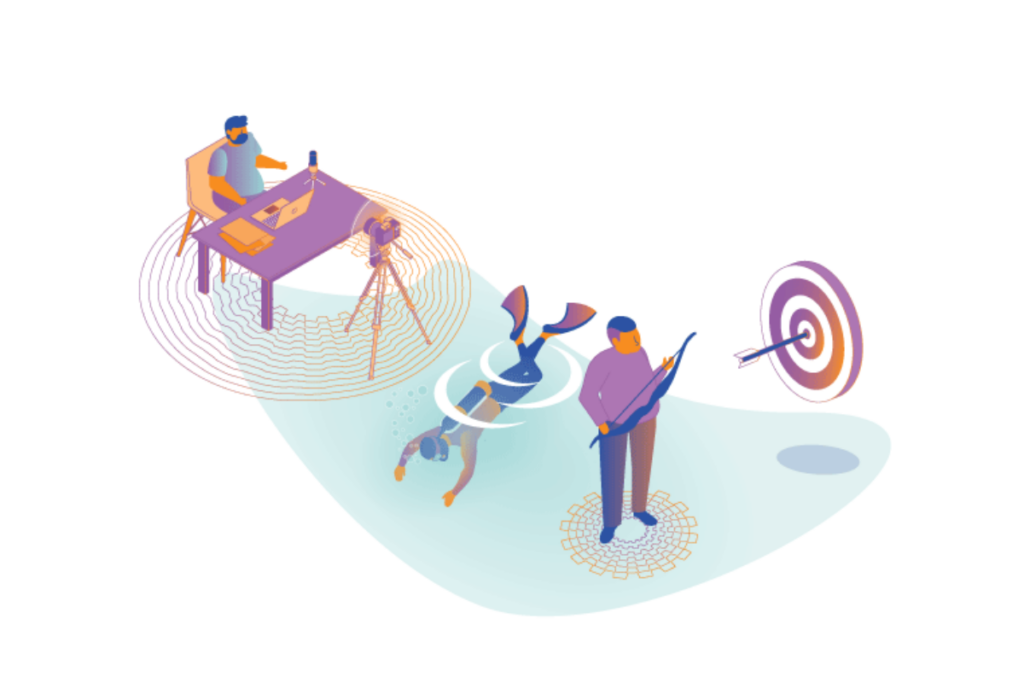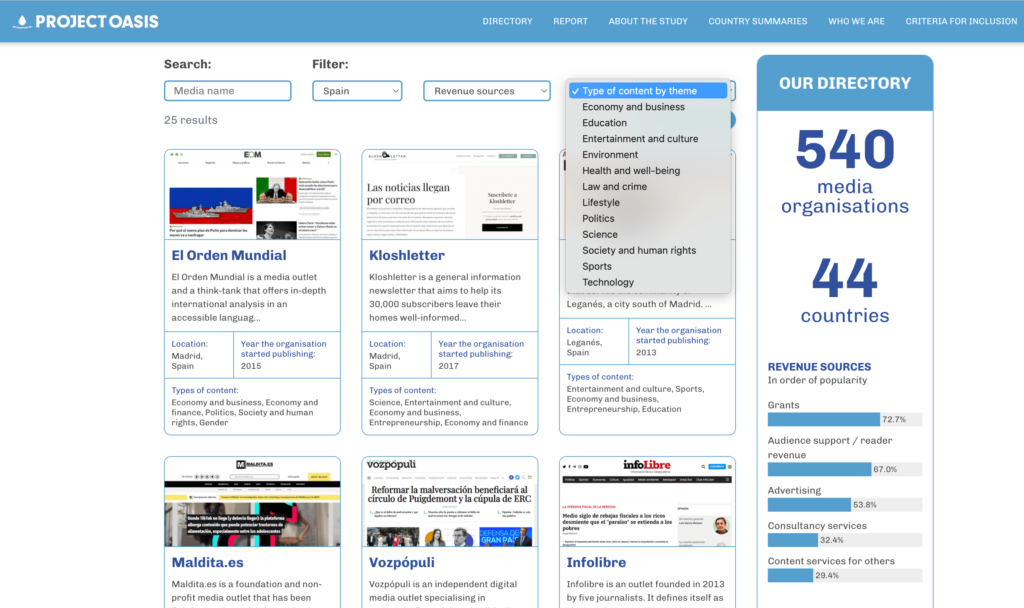
Project Oasis: Purpose and objectives
Purpose: The Project Oasis report and searchable media directory are the result of a year-long research initiative designed to study the trends, impact and sustainability of independent digital native news organisations in more than 40 countries across Europe. (Note: We began the research for this project in April 2022 and published the report and directory on 18 April 2023.)
The mission for the project is to support independent media in Europe by bringing greater visibility to digital native media organisations, and to uncover new insights about the trends, opportunities and challenges in this growing market sector.
The goal is to empower innovative media organisations to grow, develop and publish information with greater independence and sustainability, so they can better inform their communities in ways that strengthen democracy.
Objectives:
- Map the media ecosystem to identify and study independent digital native news organisations in more than 40 countries in Europe.
- Bring greater visibility to the growing European independent digital native media market sector though a searchable, interactive media directory that consists of descriptive profiles and searchable data points, including the types of news and information they cover; the journalism genres and techniques they employ; their team and management structure; business structure and revenue sources; and information about transparency.
- Enhance our understanding of digital native media by expanding on earlier research projects. These include SembraMedia’s ongoing study of Hispanic media, which began in 2015 and is available in the SembraMedia directory, and the Project Oasis media directory for the US and Canada, which was done by LION Publishers.

Who will benefit from reading this report
This report and searchable media directory were developed with the goal of providing insights and information for:
- Current and future media leaders, and their teams, with the aim of helping them learn from each other, identify potential partners, and surface business models, trends, best practices and techniques that can help them strengthen their own organisations.
- Funders, investors and media support organisations, to better understand benchmarks and trends across Europe, regions within Europe (including Central and Eastern Europe, Northern Europe and Southern Europe) and individual countries, with the goal of helping them to implement initiatives, tools and resources that better support the sustainability of independent digital native media.
- Academics, to increase their access to information about this relatively new media sector, as well as related issues such as media pluralism, media freedom, business model disruption, European media markets, media consumption, women in media and media entrepreneurship.
- Policymakers and other key stakeholders, who will be able to call upon these insights to ensure that the needs of these relatively new forms of media are considered as they shape and influence policies at national and international levels.
Country summaries focus on local markets
To better represent the unique challenges and opportunities in each of the countries we studied, our researchers wrote Country Summary reports, which feature insights and trends specific to each country.
Interviews for this research project were conducted in more than 30 languages, and we will be publishing translations of the executive summary and country summaries in all of these languages on this website in late May 2023, to provide greater access to this research.
It is important to note that because of the differences in size, economics and media freedom challenges, we were not able to include the same number of media from every country, although we did try to make sure that we had a representative sample from each, by ensuring our researchers included at least three and not more than 25 media from each country in this first version of our Project Oasis media directory. Profiles of the 540 media included in this study can be found in the media directory.